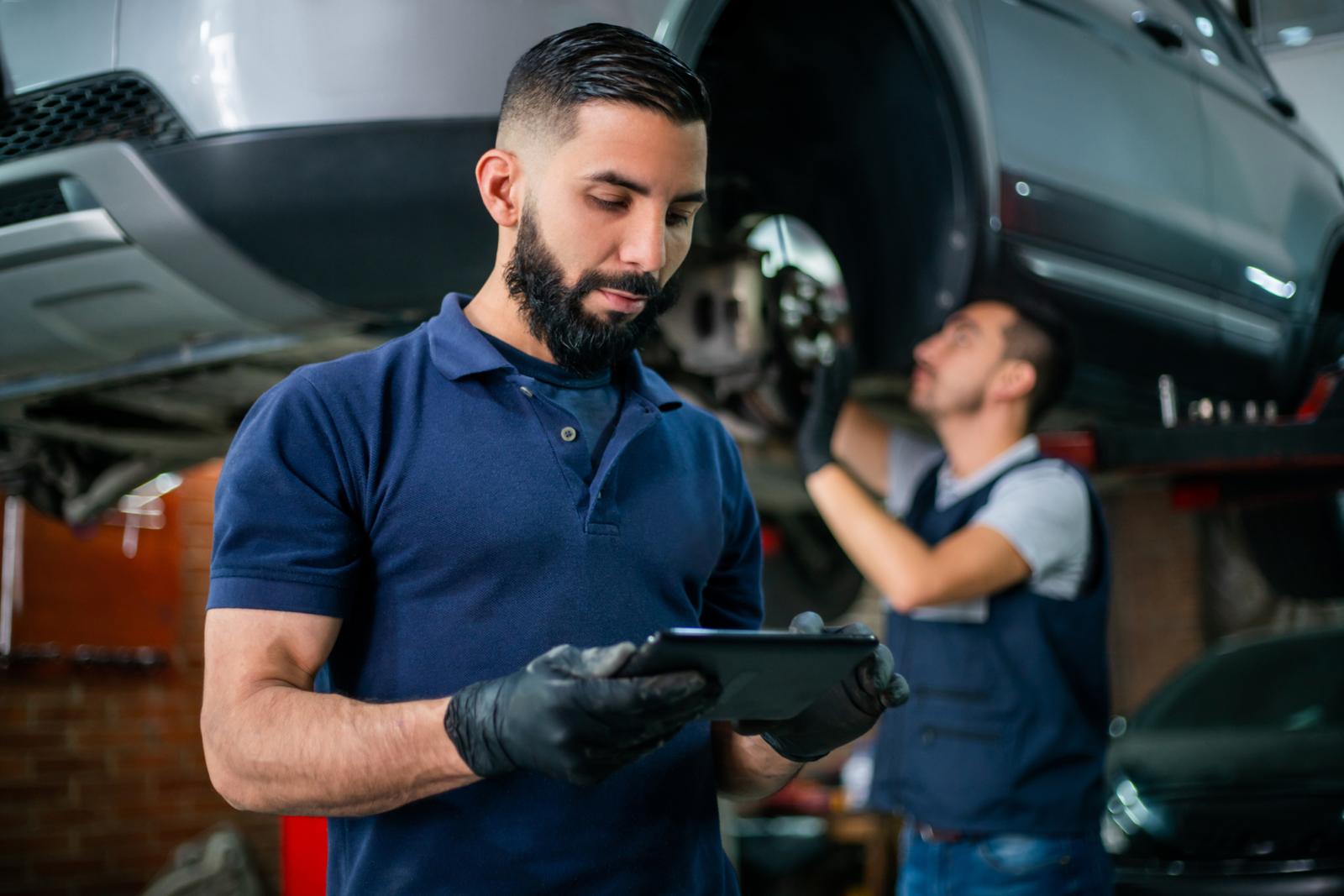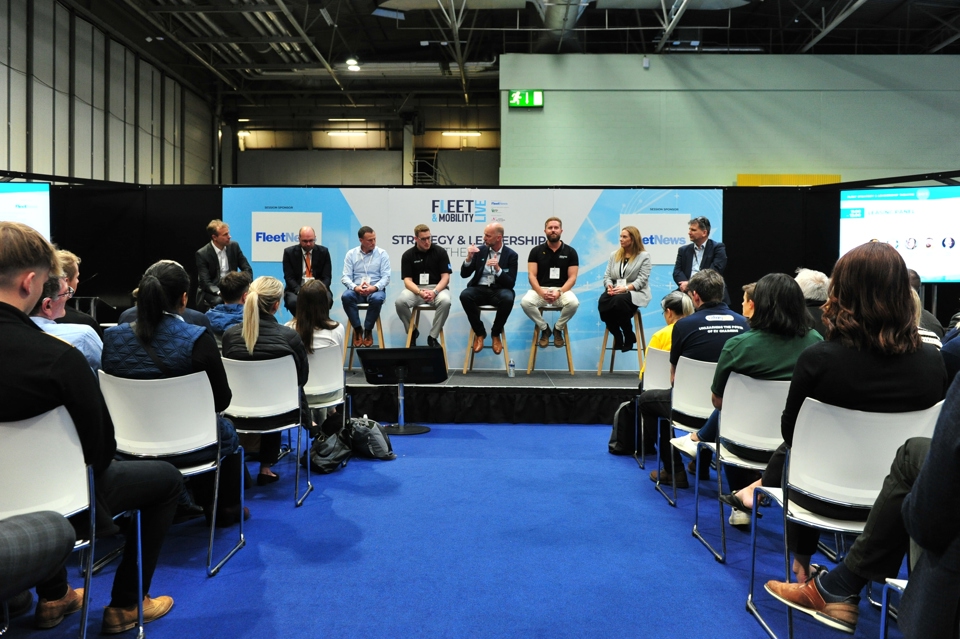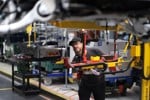A lack of service, maintenance and repair (SMR) data for electric vehicles (EVs) is proving a challenge for leasing companies factoring costs into fleet contracts.
Some fleets have chosen to unbundle contracts, believing savings associated with EVs isn’t being passed on.
But, a panel of leasing executives at Fleet and Mobility Live, said that the sector was working hard to better reflect actual SMR costs to fleets.
Phil Wilbraham, managing director of Pendragon Vehicle Management, told delegates at Fleet and Mobility Live: “If you have something that goes wrong with these cars, the SMR budgets probably feel quite low, because the cost of repair can be really, really high if there's a major component that’s gone.”
However, he acknowledged that if you do not have a major component failure, there could be a “perception” that SMR costs are too high.
“It’s about balancing that risk over the whole portfolio and dealing with those unplanned events,” he explained. “From our side, we just keep looking at the data, and we keep reviewing it and keep checking back into our pricing, because every month we learn something new, and every month we have more data points.
“What we do with that is just make sure that we are really proactive in making sure that we’re as competitive as we can be so that we’re delivering a really good price back to the fleet customer and also keeping them on the road.”
A lack of service, maintenance and repair (SMR) data for electric vehicles (EVs) is proving a challenge for leasing companies factoring costs into fleet contracts.
Some fleets have chosen to unbundle contracts, believing savings associated with EVs isn’t being passed on.
But, a panel of leasing executives at Fleet and Mobility Live, said that the sector was working hard to better reflect actual SMR costs to fleets.
Phil Wilbraham, managing director of Pendragon Vehicle Management, told delegates at Fleet and Mobility Live: “If you have something that goes wrong with these cars, the SMR budgets probably feel quite low, because the cost of repair can be really, really high if there's a major component that’s gone.”
However, he acknowledged that if you do not have a major component failure, there could be a “perception” that SMR costs are too high.
“It’s about balancing that risk over the whole portfolio and dealing with those unplanned events,” he explained. “From our side, we just keep looking at the data, and we keep reviewing it and keep checking back into our pricing, because every month we learn something new, and every month we have more data points.
“What we do with that is just make sure that we are really proactive in making sure that we’re as competitive as we can be so that we’re delivering a really good price back to the fleet customer and also keeping them on the road.”
Marshall Leasing’s MD, Greg McDowell, also highlighted a lack of data in this area, particularly in the three-to-five-year-old age category where he says that there are just not enough vehicles.
“Aside from complexity, with some of the technology that can go wrong early, it’s the normal three-to-five-year type of maintenance that you’d expect to see,” he said.
“I think it's probably a little early to form robust decisions and views around whether there are surpluses, and the budgets are too high or not.”

Savings on SMR costs for EVs, compared to internal combustion engine (ICE) vehicles, were revealed in new real-world data from Epyx in August.
It showed advantages in both the amount spent on SMR and the number of garage visits for EVs compared to ICE cars and, to a lesser extent, for hybrids.
At the end of the first year of operation, the average SMR spend for an EV was £141 compared to £195 for hybrids and £199 for ICE.
By year two, the Epyx data shows it was £174 for an EV, £266 for hybrids and £290 for ICE, with the gap widening even further in year three.
The comparable SMR costs for an ICE car were 81% higher at £401 than the £221 reported for an EV in year three, and £341 for hybrids.
In terms of garage visits, the average for EVs was 1.13 at the end of year one compared to 1.17 for hybrids and 1.21 for ICE.
By year two, the comparative figures were 1.18 for EV, 1.29 for hybrid and 1.31 for ICE.
At the end of year three, the figures were 1.36 for EV against 1.53 for hybrid and also 1.53 for ICE.
It is worth noting, however, that the average mileage for each fuel type within Epyx’s data differ, with hybrids the highest at 38,626 miles over three years, EVs at 31,805 and ICE at 31,770.
Appearing on the leasing panel alongside McDowell and Wilbraham, Martin Phillips, chief operations officer at Athlon, said: “There seems to be some challenges around unplanned work with some of the electric vehicles, and that is compounded by some capacity and capability within different networks.
“It’s about how you can steer those vehicles into the right garage for the right issue. If it needs a set of wiper blades, it’s a really simple thing – that’s an unplanned event, but it's really easy to fix.
“If it’s something high voltage that you need then you’ve got to direct it differently, and helping the drivers know where to take it at the right moment makes unplanned work quite challenging, and therefore, some of those costs are still a little grey for me.”
ATS Euromaster says that the maintenance of hybrid and fully electric cars takes longer, compared to internal combustion engine (ICE) vehicles.
Even if overall service, maintenance and repair (SMR) requirements are lower, it says fleets will need to factor in the additional service bay time and cost.
ATS Euromaster classes hybrid (HEV), plug-in hybrid (PHEV) and battery electric vehicles (BEVs) as high voltage, which all require additional time for the cars to discharge residual electricity before they can be worked on.
The protocol requires the car’s keys to be placed in a lock box and left for the time recommended by the manufacturer before the cars are deemed safe to work on by the ATS Euromaster technicians. This allows for any residual electricity to discharge fully.
Mark Holland, operations director at ATS Euromaster, said: “Many people think that high voltage just means fully electric cars, but our safety protocols, national safety standards and manufacturer’s specific safety regulations and guidelines, cover all cars, from hybrids through to full EVs.
“It means additional time in the service bay and that has a knock-on effect in terms of maintenance costs.”
The typical difference in maintenance times between a standard vehicle and a high-voltage car depends on whether the high-voltage system requires powering down.
For example, the schedule on a new BMW 320i M Sport Sport-Auto petrol versus a BMW 330e M Sport Sport-Auto PHEV is approximately 30 mins if high voltage battery disconnection is required.
On average ATS Euromaster says high-voltage cars need an additional 15-20 minutes in the maintenance bay unattended to ensure they are safe to work on.
The leasing panel discussed future trends and what are the big pressures facing fleets. Watch the full debate below.
Login to continue reading.
This article is premium content. To view, please register for free or sign in to read it.
























Login to comment
Comments
No comments have been made yet.